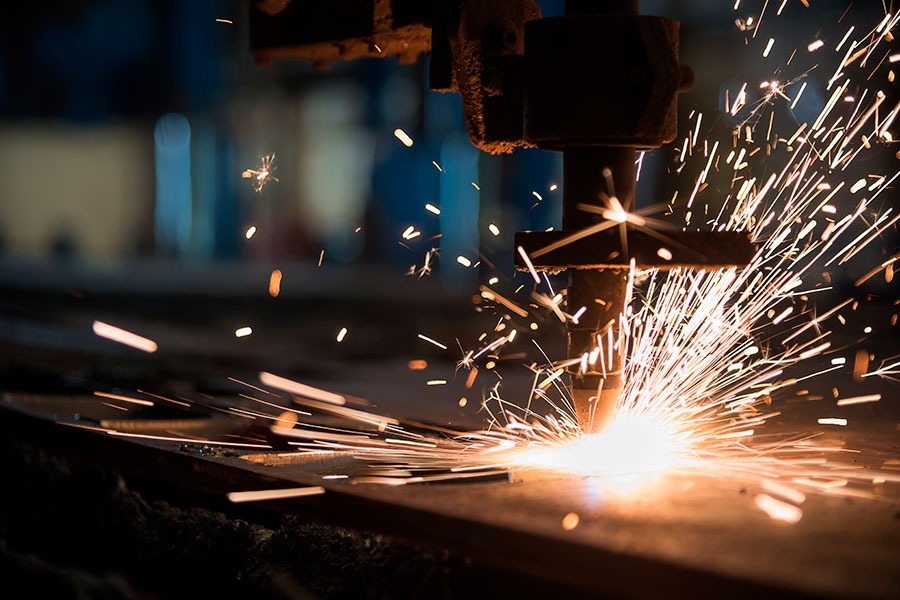Introduction to sheet metal cutting
Sheet metal cutting is a general explanation for a number of different operations that involve pressworking. The main purpose of sheet metal cutting is to remove parts of sheet metal material through cutting edges that are applied with high force to the sheet metal in question.
Shearing force for these operations is applied via shearing/die blades that cut the material by applying a lot of force to it (the force in question is applied perpendicularly towards the sheet metal piece in question). The cut is made whenever sheet metal piece strength is less than the power of shear stress applied to it.
Generally speaking, each sheet metal material piece is placed between two different parts of the sheet metal cutting process. The upper part is called a punch, while the lower part is called a die. Technically speaking, both of these parts can be called a die, but the higher part is called differently for the sake of distinguishing one from another.
There’s also the matter of clearance that needs to be addressed when it comes to sheet metal cutting – the factor of sheet metal fracturing in the process is the reason why it is recommended to have ~2% clearance between punch and die.
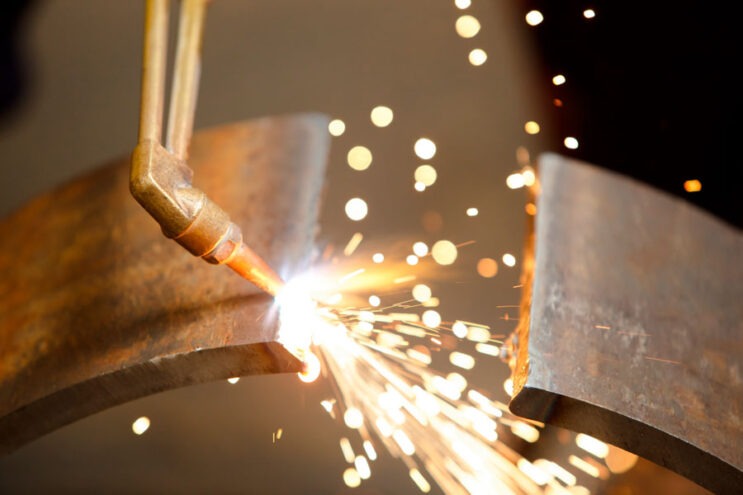
The recommended level of clearance can also change depending on the sheet metal thickness, sheet metal cutting operation type, and several other factors. The amount of burr (a rough edge of an object after the cutting process) also depends on the amount of clearance that you’ve chosen.
Sheet metal cutting operation types
Sheet metal is also referred to as a rolled metal piece with a high ratio of surface area to volume and it is usually 6 mm (¼ inch) or less in thickness. Thickness is also the main difference between sheet metal and plate metal since plate metal is thicker than that. Most of the operations below can also be performed on both plate metal and sheet metal, but a lot of operations might become more complicated with the increased plate thickness.
There are many different types of sheet metal cutting operations that can be performed to remove specific parts of a sheet metal piece. We’ve created a list of several operations that are used the most in the industry, and you can see it below:
- Punching (includes piercing, lancing, notching, slotting, nibbling, and perforation)
- Blanking
- Shearing
- Trimming
- Deburring
Some of the names can be pretty much self-explanatory, others are not as obvious. To make it easy for everyone, we’ll go over each of these operations in slightly more detail.
Punching
Punching is a relatively simple process that involves cutting out a relatively small part of the material from a sheet metal piece. A slug is a material piece that is created as a result of a punching process (and detached from the original sheet metal piece) and is discarded as scrap in most cases.
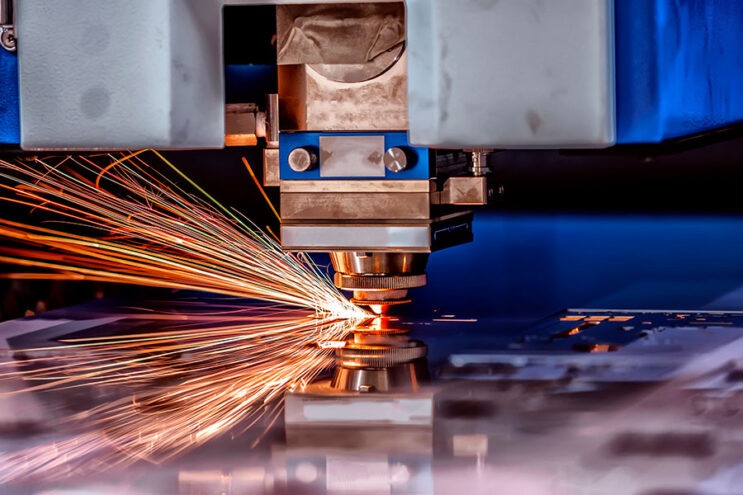
As a sheet metal cutting operation, punching has many different variations. The shape of the punched-out piece and its placement is what usually decides the type of punching operation you’re looking for.
There are six main types of punching as a sheet metal cutting operation:
- Piercing is a sheet metal punching operation that is used to create a slot or a singular hole in a sheet metal piece through the use of extrusion. The extrusion process is a combination of forming and cutting and usually produces little to no scrap as a result.
- Lancing is another type of similar operation, but this one uses a singular strike to shear and bend a part of a sheet metal piece to create various features – louvers, tabs, vents, etc.
- Notching is one more variation of a punching operation, and this one is pretty much exclusive for sheet metal edges to create notches for sheet metal bending. In many cases, notching is performed as a multi-part process, with each step of the process removing a single piece of sheet metal part to reach the desired result. A variation of this process called seminotching is not restricted to the sheet metal piece’s edges and is similar to punching – with the main difference of seminotching being a part of a bigger and more complex cutting process.
- Slotting is one of the simplest operations here, working with a rectangular tool to cut a rectangular slot in a sheet metal piece.
- Nibbling is using a combination of many overlapping punches to create different kinds of figures in a sheet metal piece. Often used to create complex shapes in sheet metal pieces.
- Perforating involves generating a number of relatively small holes that are placed close to each other in a single sheet metal piece. This operation often has its own types of machinery and tools and creates details for fluid filtration, ventilation, and so on.
Blanking
Blanking is one of the processes that is often used to create relatively small details by cutting an enclosed part of a sheet metal piece by applying a massive shear force to that piece. The part that is used to apply the force in question – the punch – is supposed to be the shape of the detail that is needed, and the sheet metal part that gets detached from the overall metal piece is a product of the operation.
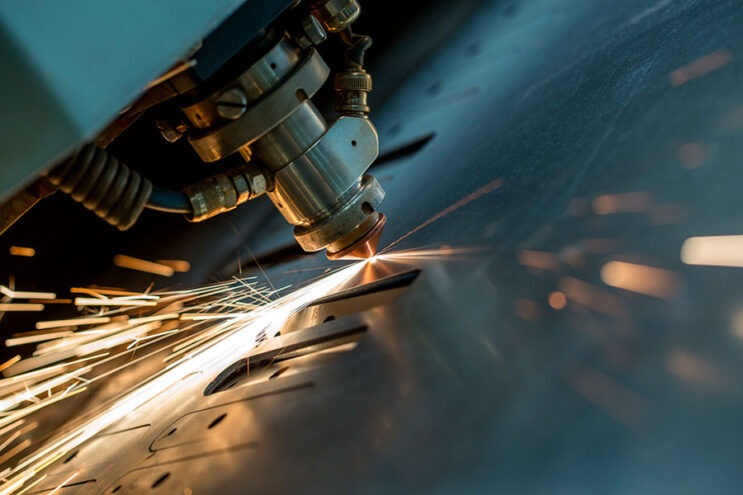
Since you can only create so many copies of a finished product using one sheet metal piece – the entire leftover piece is treated as scrap, while the blanks (pieces that get detached in the process of blanking) represent the final product. Some examples of metal pieces that can be created by blanking are automotive components, plane washers, and small gears, among many others.
Shearing
Shearing as a process is relatively similar to blanking. Shearing is used to cut a sheet metal piece either in a straight line or at an angle, and it’s often used to cut larger metal pieces into smaller ones for processing down the manufacturing line.
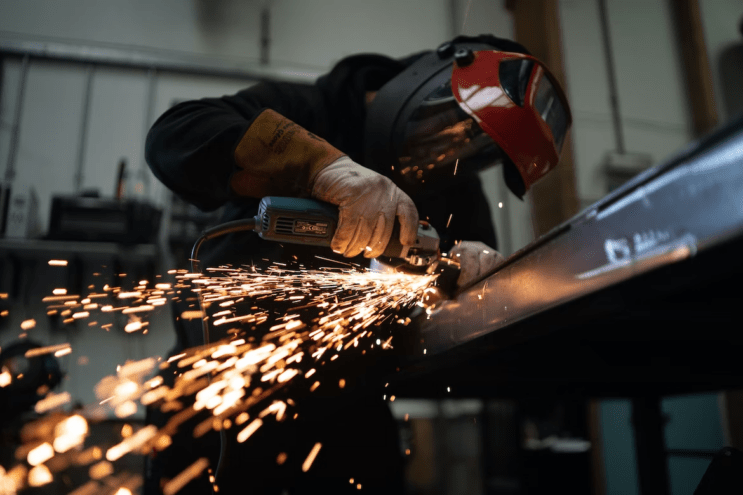
The main difference between the two is the size and the accuracy of operations. While blanking is mostly used for smaller details, shearing is a basic “preparation” step for a lot of industrial processes – all you have to do is position a sheet metal piece between two “blades” of the machine and then force the upper blade – the punch – downwards to cut off the part of the material through shear force.
Slitting
The process of cutting a sheet metal piece by two opposing circular blades, on the other hand, is called slitting. The general idea of slitting represents that of a regular can opener – with the ability to create both straight and curved lines. Most of the straight lines are done with idle cutters, while metal cutters for curved slitting are operated manually.
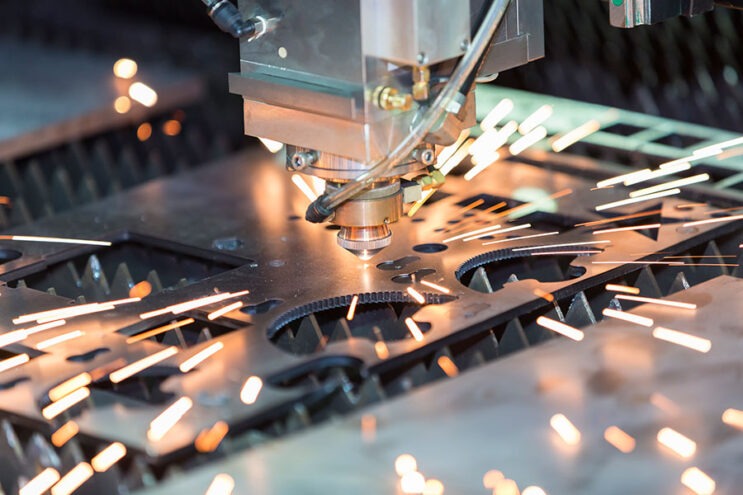
Slitting is an important part of the overall sheet metal cutting process since it is needed to create sheet metal pieces of a specific width for other machines to be able to cut them properly. Since sheet metal mostly arrives in the form of the coil to the factory, it is fairly common for slitting to be used as the first part of the sheet metal cutting process before something more specific can be done.
Trimming
Trimming is a relatively simple but important process that is used to clear up borders of the workpiece from excessive material. This is often one of the last, if not the last, operations in the manufacturing process involving machinery that works with sheet metal.
Deburring
Deburring follows pretty much the same idea that trimming does – it is used to remove excess material from a workpiece after it is complete or near-complete. The difference is that trimming is done by machinery, while deburring uses a relatively small hand-sized tool to, as the name suggests, remove the remaining burr on the workpiece to make the edges smooth and remove various splinters or rough edges.

Conclusion
Levstal offers a wide variety of sheet metal cutting services, including all of the examples above – you can find out more information about the services in question here.
Levstal is capable of producing a large variety of process equipment, including support structures, bridges, road barriers, construction equipment, duct systems, metal structures, and more.
Levstal’s client base includes companies from many different countries – Germany, Finland, Sweden, Netherlands, Belgium, Japan, and North America, to name a few. Levstal can provide its clients with extensive personalization and the capability to fulfill the entire cycle of a project, from idea and initial design to project management, manufacturing, quality control, shipping, installation, and so on.



